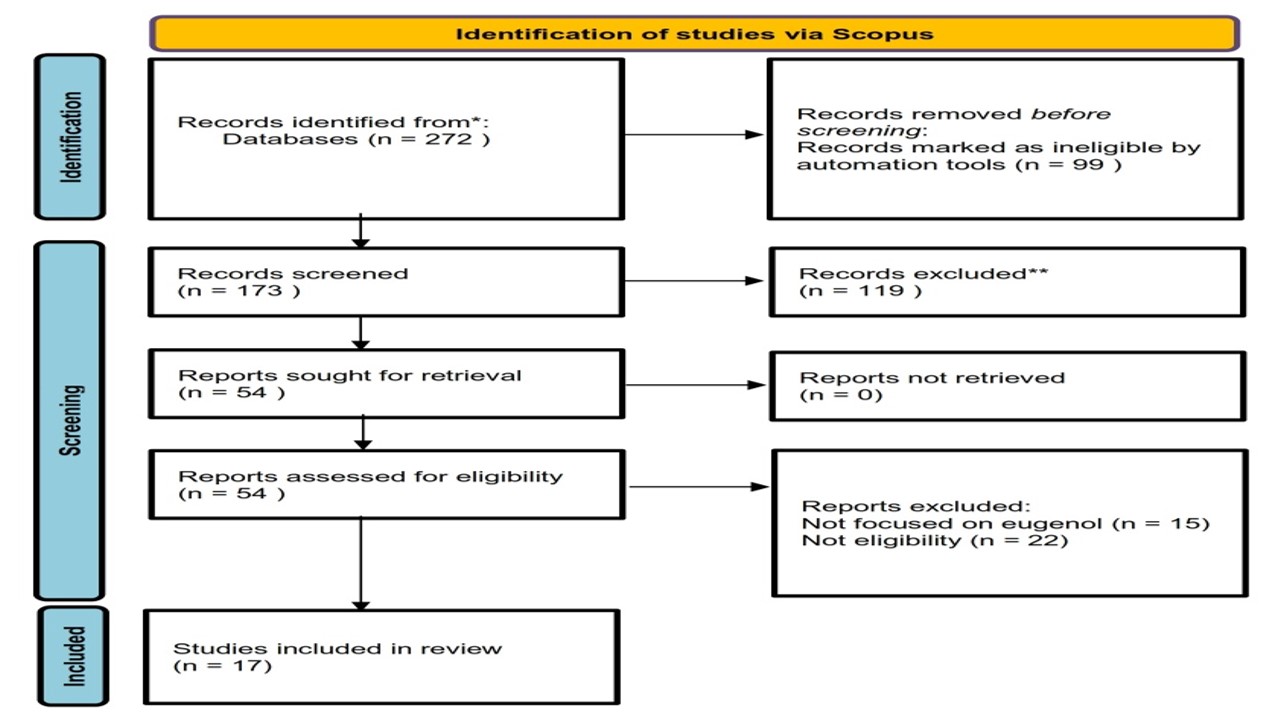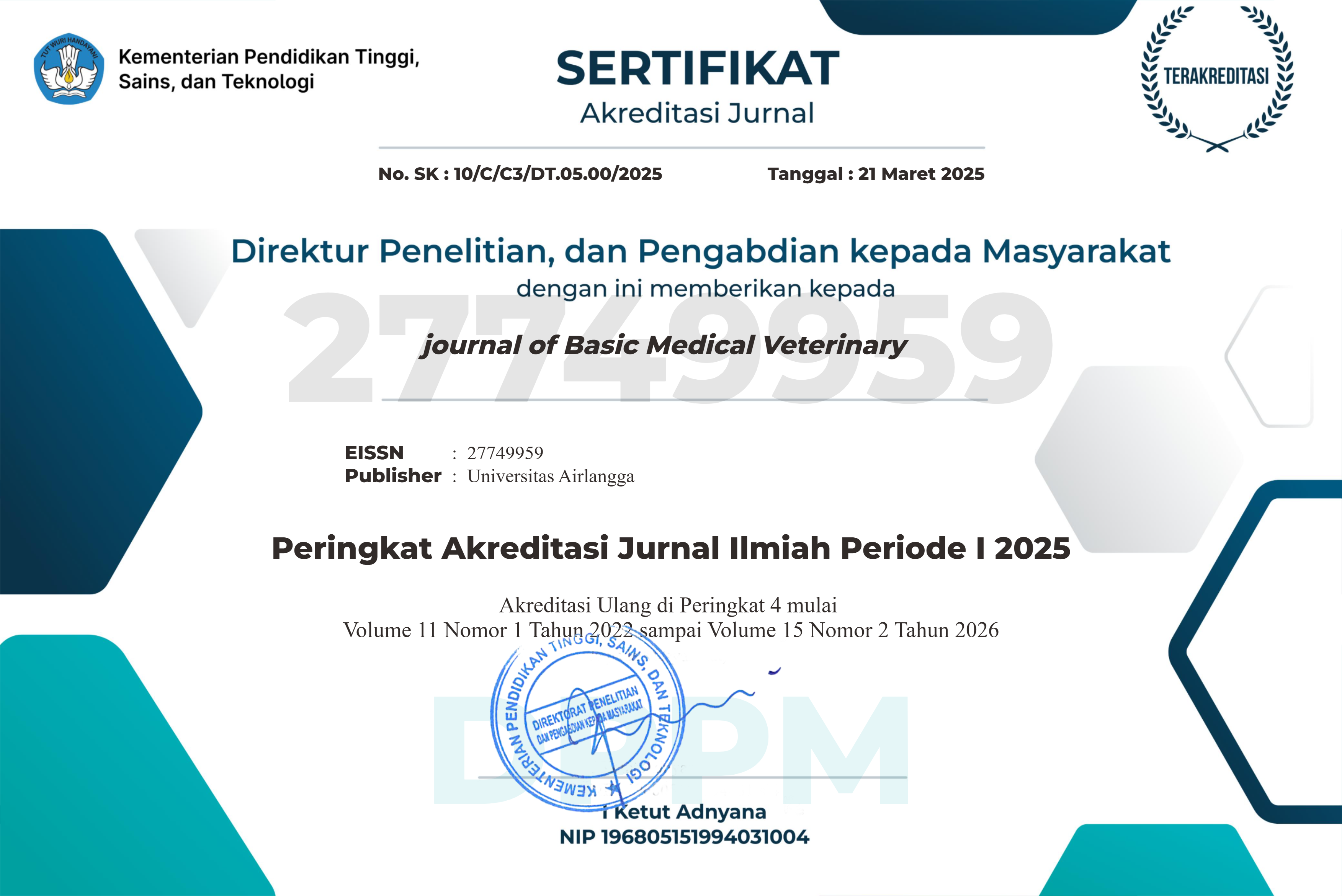Therapeutic Potential of Eugenol for Muscle Pain Management in Athletes: A Scoping Review

Downloads
Muscle pain is a prevalent affliction experienced by athletes during training and competition. Eugenol, a natural compound found in cloves, exhibits considerable promise as a therapeutic agent for myalgia through multiple mechanisms of action. Eugenol has been shown to inhibit prostaglandin E2 production and reduce cyclooxygenase-2 (COX-2) expression, a process that plays a pivotal role in inflammation and pain. Furthermore, eugenol has been observed to interact with TRPV1, HVACC, and α2-adrenergic and opioidergic receptors, contributing to its analgesic effects. In addition, studies have demonstrated that eugenol possesses significant anti-inflammatory properties, as evidenced by its ability to reduce the expression of pro-inflammatory cytokines and augment the activity of antioxidant enzymes. In a preclinical context, eugenol-active topical formulations have demonstrated encouraging results, showing promise in the development of muscle pain relief preparations for athletes, with a superior safety profile compared to conventional drugs. However, further research is necessary to optimize the dosage, formulation, and the appropriate application method. This review underscores the potential of eugenol as a safe and effective muscle pain therapy for athletes, as well as opportunities for the development of innovative topical formulations.
Abdou, A., Ennaji, H., Maaghloud, F. E., Azhary, K. E., Badou, A., Elmakssoudi, A., Aboulmouhajir, A., Ibenmoussa, S., JamalEddine, J., & Dakir, M. (2024). In silico and in vivo anti-inflammatory effect of eugenol and acetyleugenol. Scientific African, 24, e02205.
Adefegha, S. A., Oyeleye, S. I., Okeke, B. M., & Oboh, G. (2019). Influence of eugenol on oxidative stress biomarkers in the liver of carrageenan-induced arthritis rats. Journal of Basic and Clinical Physiology and Pharmacology, 30(2), 185–193.
Barboza, J. N., da Silva Maia Bezerra Filho, C., Silva, R. O., Medeiros, J. V. R., & de Sousa, D. P. (2018). An Overview on the Anti-inflammatory Potential and Antioxidant Profile of Eugenol. Oxidative Medicine and Cellular Longevity, 2018(1), 3957262.
Cavallaro, A. (2015). Gel for topical application of clove essential oil with broad spectrum anti-inflammatory action and method of preparing same (United States Patent US20150182578A1).
Cherdchom, S., Keawsongsaeng, W., Buasorn, W., Rimsueb, N., Pienpinijtham, P., Sereemaspun, A., Rojanathanes, R., & Aramwit, P. (2021). Development of Eugenol-Embedded Calcium Citrate Nanoparticles as a Local Anesthetic Agent. ACS Omega, 6(43), 28880–28889.
Daniel, A. N., Sartoretto, S. M., Schmidt, G., Caparroz-Assef, S. M., Bersani-Amado, C. A., & Cuman, R. K. N. (2009). Anti-inflammatory and antinociceptive activities A of eugenol essential oil in experimental animal models. Revista Brasileira de Farmacognosia, 19(1b), 212–217.
de Andrade, F. das C. P., & Mendes, A. N. (2020). Computational analysis of eugenol inhibitory activity in lipoxygenase and cyclooxygenase pathways. Scientific Reports, 10(1), 16204.
Groninger, H., Schisler, R.E., 2012. Topical Capsaicin for Neuropathic Pain #255. J Palliat Med 15, 946–947.
Gulin, S.J., Chiriac, A., 2016. Diclofenac-Induced Allergic Contact Dermatitis: A Series of Four Patients. Drug Saf Case Rep 3, 15.
Jesudasan, J. S., Wahab, P. U. A., & Sekhar, M. R. M. (2015). Effectiveness of 0.2% chlorhexidine gel and a eugenol-based paste on postoperative alveolar osteitis in patients having third molars extracted: A randomised controlled clinical trial. The British Journal of Oral & Maxillofacial Surgery, 53(9), 826–830.
Khalil, A. A., Rahman, U. ur, Khan, M. R., Sahar, A., Mehmood, T., & Khan, M. (2017). Essential oil eugenol: Sources, extraction techniques and nutraceutical perspectives. RSC Advances, 7(52), 32669–32681.
Kim, S. S., Oh, O.-J., Min, H.-Y., Park, E.-J., Kim, Y., Park, H. J., Nam Han, Y., & Lee, S. K. (2003). Eugenol suppresses cyclooxygenase-2 expression in lipopolysaccharide-stimulated mouse macrophage RAW264.7 cells. Life Sciences, 73(3), 337–348.
Lee, M. H., Yeon, K.-Y., Park, C.-K., Li, H.-Y., Fang, Z., Kim, M. S., Choi, S.-Y., Lee, S. J., Lee, S., Park, K., Lee, J.-H., Kim, J. S., & Oh, S. B. (2005). Eugenol Inhibits Calcium Currents in Dental Afferent Neurons. Journal of Dental Research, 84(9), 848–851.
Lugo-Lugo, D. E., Pozos-Guillén, A. de J., Zapata-Morales, J. R., Rodríguez-Chong, A., Rangel-López, A. de J., Saavedra-Leos, M. Z., & Vértiz-Hernández, A. A. (2019). Antinociceptive local activity of 4-allyl-1-hydroxy-2-methoxybenzene (eugenol) by the formalin test: An anti-inflammatory effect. Brazilian Journal of Pharmaceutical Sciences, 55, e18022.
Park, S.-H., Sim, Y.-B., Lee, J.-K., Kim, S.-M., Kang, Y.-J., Jung, J.-S., & Suh, H.-W. (2011). The analgesic effects and mechanisms of orally administered eugenol. Archives of Pharmacal Research, 34(3), 501–507.
Prasad, S. N. & Muralidhara. (2013). Neuroprotective Efficacy of Eugenol and Isoeugenol in Acrylamide-Induced Neuropathy in rats: Behavioral and Biochemical evidence. Neurochemical Research, 38(2), 330–345.
Raghavenra, H., Diwakr, B. T., Lokesh, B. R., & Naidu, K. A. (2006). Eugenol—The active principle from cloves inhibits 5-lipoxygenase activity and leukotriene-C4 in human PMNL cells. Prostaglandins, Leukotrienes and Essential Fatty Acids, 74(1), 23–27.
Ratna, T. S., Wicaksana, A. Y., & Sugihartini, N. (2020). Efektivitas Stretching dan Minyak Atsiri Bunga Cengkeh Terhadap Penurunan Nyeri Otot. Gaster, 18(2), 202–214.
Seo, H., Li, H. Y., Perez-Reyes, E., & Lee, J.-H. (2013). Effects of eugenol on T-type Ca2+ channel isoforms. The Journal of Pharmacology and Experimental Therapeutics, 347(2), 310–317.
Takahashi, K., Yoshida, T., & Wakamori, M. (2021). Mode-selective inhibitory effects of eugenol on the mouse TRPV1 channel. Biochemical and Biophysical Research Communications, 556, 156–162.
Tammannavar, P., C, P., Jain, S., & Sv, S. (2013). An unexpected positive hypersensitive reaction to eugenol. Case Reports, 2013, bcr2013009464.
Versteeg, N., Wellauer, V., Wittenwiler, S., Aerenhouts, D., Clarys, P., Clijsen, R., 2024. Short-term cutaneous vasodilatory and thermosensory effects of topical methyl salicylate. Front Physiol 15, 1347196.
Wang, M., Dai, T., Li, S., & Wang, W. (2022). Eugenol suppresses the proliferation and invasion of TNF-α-induced fibroblast-like synoviocytes via regulating NF-κB and COX-2. Biochemical and Biophysical Research Communications, 612, 63–69.
Ye, H., Lin, Q., Mei, Q., Liu, Q., & Cao, S. (2024). Study on mechanism of transdermal administration of eugenol for pain treatment by network pharmacology and molecular docking technology. Heliyon, 10(8).
Copyright (c) 2025 Chaerul Fadly Mochtar

This work is licensed under a Creative Commons Attribution-ShareAlike 4.0 International License.
Journal of Basic Medical Veterinary (JBMV) by Unair is licensed under a Creative Commons Attribution-ShareAlike 4.0 International License.
1. The journal allows the author to hold the copyright of the article without restrictions.
2. The journal allows the author(s) to retain publishing rights without restrictions
3. The legal formal aspect of journal publication accessibility refers to Creative Commons Attribution Share-Alike (CC BY-SA).
4. The Creative Commons Attribution Share-Alike (CC BY-SA) license allows re-distribution and re-use of a licensed work on the conditions that the creator is appropriately credited and that any derivative work is made available under "the same, similar or a compatible license”. Other than the conditions mentioned above, the editorial board is not responsible for copyright violation.







 Perhimpunan Dokter Hewan Indonesia
Perhimpunan Dokter Hewan Indonesia








